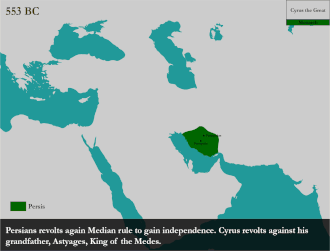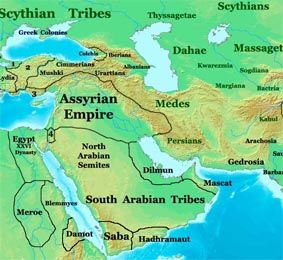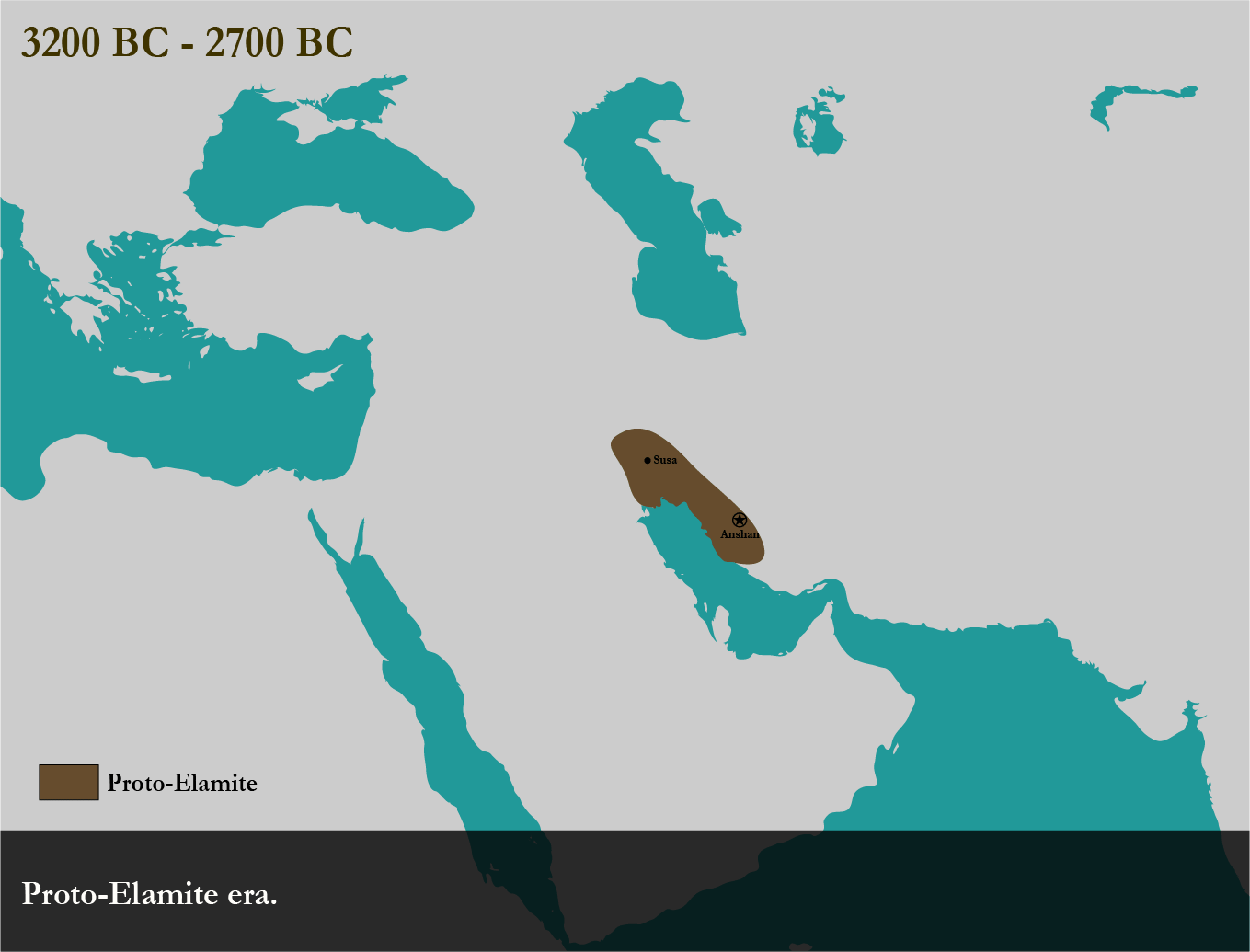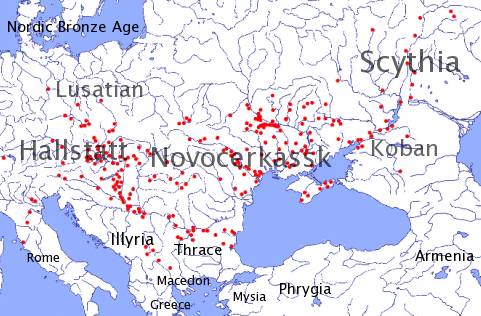우리는 지난 글, '낙랑은 어디에 있었는가? (III), (IV)'에서 Dacians, Etruscan, Phrigians 등이 Wolf(늑대)라는 매개로 서로 연관되어 있음을 알게 되었다. 필자는 이들이 낙랑조선이 아닌가 하는 추정을 했다.
'낙랑조선'이란 표현은 기자조선에서 처음 언급된다. 즉 상나라 말기의 현자였던 '기자'가, 주 무왕의 백성을 편안하게 하는 방도의 질문에 홍범 9주를 말했다 한다. 기자는 동쪽으로 조선에 가서 다스렸다 하는데, 이때 '낙랑조선' 사회에서는 8조금법이 행해지게 되었다고 한서 지리지 연조에 기록되었다 한다. (아래 자료 참조) 즉 BC 11c에 '낙랑조선'이라고 나타난 바, 기자조선을 낙랑조선이라 한 것으로 보인다.
"또 《사기》 송미자세가(宋微子世家)에는 무왕이 은을 정복한 뒤 기자를 방문하여, 백성을 편안하게 하는 방도를 묻자 홍범9주를 지어 바쳤다. 이에 무왕이 그를 조선왕으로 봉해주었으나, 기자는 신하의 예를 갖추지 않았다고 한다.
마지막으로 《한서》 지리지 연조(燕條)에는 은나라가 쇠하여지자 기자가 조선에 가서 그 백성에게 예의와 농사 ·양잠 ·베짜기 기술을 가르쳤더니, 낙랑조선(樂浪朝鮮) 사회에서는 범금팔조(犯禁八條)가 행해지게 되었다고 한다."
(자료 : 기자조선, 두산백과, 필자의 네이버 블로그, 카테고리, 기자조선, 펌글 참조)
필자는 이집트의 Nefertiti 황후가 편두를 한 사실을 들어 이집트가 한민족의 역사가 아닌가 판단했다. 그런데 Nefertiti는 BC 1370-1330 BC 시기의 사람이다. BC 3000년 경의 제일 오래된 유명한 3개의 Giza Pyramides가 Giza지역에 있는 피라미드라 한다. 즉 'Giza' 란 지역 이름이 있다는 것이다. 필자는 이 '기자'라는 지역 이름이 혹시 기자 조선과 연관이 있는지 궁금하다. 기자 조선은 BC 1100 - BC 198 기간 존재하였다고 가정된다. 위만조선의 전단계 기간이라 한다. 기자조선의 유무에 대한 여러 의견이 있지만, 여기서는 그 명칭 보다, 고조선의 위치를 찾는데 의미를 두고자 한다. 따라서 기자 조선이 혹시 이집트 지역을 영역으로 가졌나 보려면, 이집트의 역사 중에 기원전 11세기 이후의 역사를 보아야 한다. 즉 제3 중왕국 시기 (BC 1069-664 BC)와 Late period of ancient Egypt (BC 664-332 BC)시기의 이집트 역사에서 관련이 있을 수 있다. 이런 면에서 이집트와 레반트지역을 포함한 제국, 즉 앗시리아제국, 메디아제국, 페르시아 제국 등과의 관계가 관심의 초점이 된다. 이 점을 감안하고 아래 Massagetae와 Dahae의 역사를 검토하고자 한다.
필자는 지난 글, '낙랑은 어디 있었는가? (IV)'에서 Scythians인 Dacians(=Getae)은 중앙아시아의 Massagetae와 카스피해 동쪽의 Dahae와 연관이 있다고 하는 기술이 있다고 언급했다. 그래서 이들 Massagetae와 Dahae에 대해 위에서 언급한 시각을 가지고 검토해 보고자 한다.
Dahae는 Parthian Empire (BC 247-AD224)의 원천이 되는 곳이라 한다. 필자는 과거 글에서 파르티마제국의 후반기와 사산왕조 페르시아가가 신라로 추정된다고 분석했다. 신라는 진한(辰韓)이며, 진한(辰韓)은 진국(辰國)이라 하는데, 신비에 쌓인 진국(辰國)에 대해 알아 가는 계기가 되면 좋을 것이다.
페르시아에는 Parthian Empire 전에 Achemenid Empire (BC 550-330 BC)가 있었다. (아래 지도 참조). 이들은 오직 13년만 존재했던 알렉산더 제국에 앞서서, 200여년을 존재하였다. 즉 페르시아의 영광을 과시한 제국이었다. 그런데 아케메네스 제국의 창시자인 Cyrus the Great (Cyrus 대제)는 Massagetae의 여왕 Tomyris에 의해 전사했다는 전설적인 이야기가 있다. 즉 아케메네스제국이 Massagetae와 연관이 있다는 것이다. 따라서 아케메네스 제국의 왕을 이길 정도의 군사력을 가진 Massagetae의 정체에 대해 필자는 매우 궁금하다. 앞에서 언급한 진국(辰國) 관련 실마리가 나오면 하는 바람이다. 그리고 아울러 역사적으로 이집트를 지배한 앗시리아제국, 메디나제국, 페르시아제국이 편두를 한 여왕이 있는 이집트, Giza(기자) 지역이 있는 이집트에 대한 한가닥의 실마리적인 설명을 얻을 수 있다면 행운이라 생각한다. 수메르지역, 바빌로니아지역, 앗시리아지역은 오랜 역사로 많은 역사 자료를 제공한다. 이집트, 페르시아도 마찬가지이다. 그들을 모두 섭렵하여 공부하는 것은 매우 도전적인 일이며, 많은 시간을 요하는 일이다. 그런 거창한 분석은 후일로 미루고자 하며, 단지 즉 본 글에서 Massagetae와 Dahae에 대한 분석은 이러한 의미와 의도를 가지고 있다는 것을 미리 밝히고자 한다.

Persian Empire timeline (BC 553-BC 323) including important events and territorial evolution (source : Wikipedia)
Massagetae는 중앙아시아 스텝지역, 카스피해 북동쪽의 투르크메니스탄, 우즈베키스탄의 서쪽, 카자흐스탄의 남쪽 지역에 거주했으며, 사카(Saka, 색족)족에 속하며, 넓은 의미의 스키타이족이다. 그리스, 로마학자에 의하면, Massagetae는, 코카서스산맥 남쪽에 있는 (Kura river의 남쪽) Aras river의 북쪽, 흑해 연안의 스키타이족과 카스피해 동쪽에 있는 Dahae의 동쪽, 타림분지의 Issedones의 서쪽, 소그디아의 북쪽에 접했다고 한다. (아래 자료 참조)
"The Massagetae, or Massageteans,[1] (Greek: Μασσαγέται (Massagétai), Iranian: *Masyaka-tā)[2][3] were an ancient Eastern Iranian nomadic tribal confederation,[4][5][6][7] who inhabited the steppes of Central Asia, north-east of the Caspian Sea in modern Turkmenistan, western Uzbekistan, and southern Kazakhstan. They belonged to the Saka people,[2][3] and were part of the wider Scythian cultures,[8] According to Greek and Roman scholars, the Massagetae were neighboured by the Aspasioi (possibly the Aśvaka) to the north, the Scythians and the Dahae to the west, and the Issedones (possibly the Wusun) to the east. Sogdia lay to the south.[9] .....
(source : Massagetae, Wikipedia, 본 블로그, 카테고리, 중앙아시아, 펌글 참조)

Location of Massagetae, Dahae with Medes, Assyrian Empire BC 8c
Massagetae는 이란어로 Fisherman이라는 뜻이라고 분석하는 사람들도 있지만, Strong Getae라는 뜻이란 분석도 있다. BC 5c의 역사학자 Herodotus는 Massagetae가 Caspian Sea 동쪽 평원과 코카서스산맥 아래에 있는 Aras river 북쪽에 산다고 언급했다.
"Herodotus stated the Massagetae were a great and warlike nation, dwelling beyond the river Araxes and that they are regarded as a Scythian race.[25]...A 9th century work by Rabanus Maurus, De Universo, states: "The Massagetae are in origin from the tribe of the Scythians, and are called Massagetae, as if heavy, that is, strong Getae."[29][30] In Central Asian languages such as Middle Persian and Avestan, the prefix massa means "great", "heavy", or "strong".[31] "
(source : Massagetae, Wikipedia, 본 블로그, 카테고리, 중앙아시아, 펌글 참조)
중세학자들은 또한 이들이 훈족이라고도 한다. 그래서 트라키아에서 Massagetae라 알려진 훈족이 다뉴브강을 건너 쳐들어 왔을때, 아무런 제지를 받지 않았다고 한다.
"Procopius writes in History of the Wars Book III: The Vandalic War:[27] "the Massagetae whom they now call Huns" (XI. 37.), "there was a certain man among the Massagetae, well gifted with courage and strength of body, the leader of a few men; this man had the privilege handed down from his fathers and ancestors to be the first in all the Hunnic armies to attack the enemy" (XVIII. 54.). Evagrius Scholasticus (Ecclesiastical History. Book 3. Ch. II.): "and in Thrace, by the inroads of the Huns, formerly known by the name of Massagetae, who crossed the Ister (=Danube) without opposition".[28] "
(source : Massagetae, Wikipedia, 본 블로그, 카테고리, 중앙아시아, 펌글 참조)
현대의 많은 학자들은 Massagetae가 Getae와 연관되어 있다고 한다. 또한 사카족이라고 하는데 인도 스키타이족인 사카족이라고도 한다. 비잔틴제국의 사가들은 Massagetae가 훈족, 투르크족, 타타르족들을 일컫는 옛날 표현이라고 했다.
"Many scholars have suggested that the Massagetae were related to the Getae of ancient Eastern Europe.[35] Tadeusz Sulimirski notes that the Sacae also invaded parts of Northern India.[36] Weer Rajendra Rishi, an Indian linguist[37] has identified linguistic affinities between Indian and Central Asian languages, which further lends credence to the possibility of historical Sacae influence in Northern India.[31][36] According to Guive Mirfendereski at the Circle of Ancient Iranian Studies (CAIS), the Massagetae are synonymous with the Sakā haumavargā of South Asian historiography.
Rüdiger Schmitt notes Ptolemy's conflicting reports concerning the Massagetae.[3] First, localizing them near Margiana, then later Ptolemy calls them a tribe of the Saka in the vicinity of the Hindu Kush and Karakorum.[3] Schmitt also notes that Byzantine authors used the word "Massagetae" as an antiquated term for Huns, Turks, Tatars and other related peoples, "what has no relevance, however, for ancient times".[3]
(source : Massagetae, Wikipedia, 본 블로그, 카테고리, 중앙아시아, 펌글 참조)
즉 Massagetae는 Getae와 관련되었고, Jordanes는 Goths족을 Getae라 했으며, 고트족은 즉 훈족 즉 고구려라고 필자는 추정하므로, Massagetae도 흉노 아니면 고조선의 일부인 한민족이 아닐까 필자는 생각한다.
그러나 Massagetae에 관한 위키자료에서 이들의 군사적 활동에 대한 구체적인 기록은 별로 없다. 단지 BC 5세기의 역사학자 Herodotus(BC 484-425 BC)가 언급한 Massagetae의 스키타인 공격에 대한 언급이 있을 뿐이다. 이 시기는 기원전 10세기의 일이므로 보다 구체적인 내용을 전하는 다른 자료를 이용해 Massagetae에 대해 파악해 보고자 한다.
Herodotus에 의하면 중앙아시아의 Massagetae는 근처의 스키타이인들을 공격했는데, 스키타이인들은, 그 반응으로 코카서스산맥아래의 Aras River를 넘어 Cimmerians 나라로 침범했고, 이에 키메리언들은 소아시아 터어키의 아나톨리아로 이동 하였으며, 스키타이인들은 키메리언을 추격하다가, 페르시아지역의 Medes (BC 678-549 BC)(메디아제국)까지 침범하게 되었다 한다.
"According to Herodotus, the Massagetae attacked the Scythians, who in response crossed the river Araxes and invaded the country of the Cimmerians, who fled into Anatolia due to the Scythian invasion, with the Scythians pursuing them and eventually invading the Medes.[13] "
(source : Massagetae, Wikipedia, 본 블로그, 카테고리, 중앙아시아, 펌글 참조)

Timeline of Pre-Achmenid Empire Era (source : Wikipedia)
키메리언은 BC 1000년경 나타나는 인도유럽인으로서, BC 8c에 앗시리아 기록에서 언급된다. 키메리언은 문화적으로 스키타인의 일종이지만, 인종적으로 약간 다르며, 스키타인들은 키메리언을 이동시키고 대체해 나갔다. 키메리언은 카스피해 스텝지역으로부터 기원하는 것으로 보이며, 코카서스산맥 북쪽을 거쳐 서유럽과 남유럽으로 이동하였다. (아래 지도 참조). 아래 지도를 보면 우리가 지난 글에서 살펴 보았던 다키언지역으로 이동한 것으로 보인다.
"The Cimmerians (also Kimmerians; Greek: Κιμμέριοι, Kimmérioi) were a nomadic Indo-European people, who appeared about 1000 BC[1] and are mentioned later in 8th century BC in Assyrian records. While the Cimmerians were often described by contemporaries as culturally "Scythian", they evidently differed ethnically from the Scythians proper, who also displaced and replaced the Cimmerians.[2] Probably originating in the Pontic-Caspian steppe, the Cimmerians subsequently migrated both into Western Europe and to the south, by way of the North Caucasus.

Distribution of "Thraco-Cimmerian" finds. From map in Археология Украинской ССР vol. 2, Kiev (1986) (source : Wikipedia)
(source : Cimmerians, Wikipedia, 본 블로그, 카테고리, 고대 Anatolia, 펌글 참조)
그런데 이러한 스키타이족의 일종인 키메리언의 이동상황을 의미하는 다른 지도 하나를 아래 소개한다. 기원전 4-5세기의 지도로 보이는 아래 지도는 발칸반도지역 주위를 설명하고 있는데, 아래 사각형 설명이 흥미롭다. 노란색 지역은 독립적인 그리스 국가들이고, 보라색 지역은 게르만족이라 하며, 아래의 Illyres(일리리안 지역, 갈색), Thraces(트라키안 지역, 연녹색), Scythes (스키타이인 지역, 연갈색) 사람들은 이란민족이라 설명한다. 인도유럽인이란 정의가 본래 동방 아시아로부터 온 사람들이라는 뜻이지만, 위의 스카티이족의 일원인 키메리언이 분포한 위의 지도와 비교할 때, 이란인들이라는 설명이 예사롭지 않다는 생각이다. 위에서 우리는 Massagetae가 스키타이인들을 공격했고, 스키타이인들은 Aras river의 남쪽에 있는 키메리언들은 공격했고, 키메리언들은 소아시아 아나톨리아로 이동했다고 했다. 이들을 추격하던 스키타이인들은 페르시아의 메디아제국까지 침범했다고 했다. 그리고 또 위의 글에서 일부 키메리언들은 코카서스산맥 북쪽을 거쳐 서유럽과 남유럽으로 이동했다고 말하고 있다. 즉 발칸반도의 일리리언, 트라키언, 스키타인들이 이란으로부터 온 이란민족이라는 설명과 유사한 것이다. 이러한 추론을 고려 할 때, 발칸반도에서 흑해 연안 우크라이나 지역, 발트해 연안, 남부 폴란드지역에 퍼져 있던 Dacians이 이란지역으로부터 또는 중앙아시아로부터 이동한 것이라는 추론이 가능하다. 즉 Massagetae와 Dahae지역이 Dacians과 연관된다는 설명은, 다시 말하면 중앙아시아에 있던 Massagetae나 Dahae의 일부가 Dacians지역으로 이동했다는 것을 의미한다는 것이다.

상기한 바와 같은 추론은, 낙랑조선일 지도 모르는 Dacians과의 연관성을 고려할 때, 중앙아시아의 Massagetae나 Dahae지역도 낙랑조선의 일부가 될 수 있다는 추정을 가능하게 한다.
일부 키메리언은 BC 714년에, Neo-Assyrian Empire에 속한 Urartu 지역국가를 침범했다. 그러나 이들은 BC 705년 Sargon II왕의 앗시리아군에 패배하고, 남부 일부 키메리언은 아나톨리아로 진격해 BC 696/5년에 Phrygia를 정복했다. 이들은 소아시아 Lydia의 수도 Sardis를 점령한 BC 652년에 그들의 전성기에 달했다. 그러나 앗시리아안이 통제하는 Anshan(안산, 이라크 유프라테스강 하류지역)의 공격에 의해 좌절되고, BC 619년후에는 Lydia에 패배한다. 그 이후로는 역사에서 언급이 없는데, 아마도 소아시아의 카파도키아에 정착한 것같다고 아래에 기술된다. Lydia에 패배한 후, 역사에서 언급이 없다는 것은, 이후 다른 지역으로 이동했다는 의미도 될 수 있다고 본다.
"Some of them likely comprised a force that, c. 714 BC, invaded Urartu, a state subject to the Neo-Assyrian Empire. This foray was defeated by Assyrian forces under Sargon II in 705, after which the same, southern branch of Cimmerians turned west towards Anatolia and conquered Phrygia in 696/5. They reached the height of their power in 652 after taking Sardis, the capital of Lydia; however, an invasion of Assyrian-controlled Anshan was thwarted. Soon after 619, Alyattes of Lydia defeated them. There are no further mentions of them in historical sources, but it is likely that they settled in Cappadocia."
(source : Cimmerians, Wikipedia, 본 블로그, 카테고리, 고대 Anatolia, 펌글 참조)
우리는 전의 글, '낙랑은 어디에 있었는가?(IV)'에서 Dacians와 관련한 Wolf가 Phrygians의 신이란 글을 기억한다. 즉 프리기언과 다키언의 연관성을 이로써 확인했다. 또한 앞의 글 '낙랑은 어디 있었는가?(III)'에서, 에트루리아인들은 소아시아의 Lydia에서 이동한 사람들이라는 주장이 있었다는 것을 기억한다. 따라서 위의 키메리언들의 이동상황이 혹시 이러한 것과 연관이 있지 않나 생각한다. 즉 중앙아시아의 Massagetae로부터 시작한 스키타인들의 이동이, 이란지역을 거쳐, 소아시아의 Phrygia, Lydia지역을 지나, 발칸반도의 Dacians, 그리고 이태리북부의 Etruscan까지 연결될 수 있는 것이다. 그리고 이러한 이동상황은 모두 낙랑조선일 수 있는 기자조선 기간에 있었다는 것을 상기 하고자 한다.
헤로도투스에 의하면, 키메리언은 BC 8c-7c에 코카서스와 흑해의 북쪽, 즉 지금의 우크라이나, 러시아에 거주했다. 이들의 문화의 원천은 다뉴브강과 볼가강 사이에 있는 Belozerskaya culture (12th to 10th centuries BC) 와 Novocerkassk (10th to 7th centuries BC)에 관련되어 있다. 'North Thracian-Cimmerian culture' 영역은 알프스 동부의 Halsttat culture와 일부 겹치는데, 이런 용어를 쓴 것은, 유럽의 철기시대 초에, 스키타이인들이 팽창함에 따라, 키메리언들은 흑해 연안지역(Srubnaya culture)으로부터 동유럽으로 이동하는 것을 주장하려는 의도의 표현이다. 이는 필자가 위에서 언급한 추리와 매우 유사한 주장이라 할 수 있다. 즉 키메리언들의 이동은 스키타이족이 코카서스에서 흑해를 거쳐 동유럽으로 이동하는 것을 나타낸다는 것이다.
"According to Herodotus, the Cimmulerians inhabited the region north of the Caucasus and the Black Sea during the 8th and 7th centuries BC (i.e. what is now Ukraine and Russia), although they have not been identified with any specific archaeological culture in the region.[10]The origin of the culture is associated with the Belozerskaya culture (12th to 10th centuries) and the later and more certain Novocerkassk (10th to 7th centuries BC) between the Danube and the Volga.[11]
The use of the name "Cimmerian" in this context is due to Paul Reinecke, who in 1925 postulated a "North-Thracian-Cimmerian cultural sphere" (nordthrakisch-kimmerischer Kulturkreis) overlapping with the younger Hallstatt culture of the Eastern Alps. The term Thraco-Cimmerian (thrako-kimmerisch) was first introduced by I. Nestor in the 1930s. Nestor intended to suggest that there was a historical migration of Cimmerians into Eastern Europe from the area of the former Srubnaya culture, perhaps triggered by the Scythian expansion, at the beginning of the European Iron Age. In the 1980s and 1990s, more systematic studies of the artifacts revealed a more gradual development over the period covering the 9th to 7th centuries BC, so that the term "Thraco-Cimmerian" is now rather used by convention and does not necessarily imply a direct connection with either the Thracians or the Cimmerians.[12]"
(source : Cimmerians, Wikipedia, 본 블로그, 카테고리, 고대 Anatolia, 펌글 참조)
아래는 앗시리아 기록에 나오는 키메리언에 관한 자료이다. 앗시리아 기록에는 키메리언의 고향은 Gamir, 즉 흑해의 남쪽이다. 앗시리아 기록에 키메리언은 최초 714 BC에 나타나는데, Gimirri라 명명된 이 부족은 앗시리아의 Sargon II왕을 도와 Urartu왕국을 패배시키는데 도움을 주었다 한다. 그러나 앗시리아의 Sargon II왕이, 페르시아로부터 키메리언을 쫓아내기 위해 Urartu와 합쳐 키메리언들과 전쟁하다가 죽임을 당한후, 키메리언들은 동과 서로 이동을 하였다고, 앗시리아 기록은 언급한다. (자세한 내용은 본 블로그, 카테고리, 고대 페르시아, 'Mannaeans' 펌글 참조). 키메리언은 그후 BC 696-695년에 프리기아를 정복하고 프리기아의 왕 Midas (만지면 금이 된다는 마이더스왕)가 자살하게 만든다. BC 681-669시기에는 앗시리아의 식민지 Cilicia와 Tabal (프리기아 남쪽, 레반트와 인접한 지중해변 지역)을 공격했으나 격퇴당했다. 그후로도 Hubushna (Hupisna)를 공격을 했으나 패배당했다. (아래 기록 참조)
"Assyrian records

Cimmerian invasions of Colchis, Urartu and Assyria 715–713 BC
Austen Henry Layard's discoveries in the royal archives at Nineveh and Calah included Assyrian primary records of the Cimmerian invasion.[13] These records appear to place the Cimmerian homeland, Gamir, south (rather than north) of the Black Sea.[14][15][16] The first record of the Cimmerians appears in Assyrian annals in the year 714 BC. These describe how a people termed the Gimirri helped the forces of Sargon II to defeat the kingdom of Urartu. Their original homeland, called Gamir or Uishdish, seems to have been located within the buffer state of Mannae.
The later geographer Ptolemy placed the Cimmerian city of Gomara in this region. The Assyrians recorded the migrations of the Cimmerians, as the former people's king Sargon II was killed in battle against them while driving them from Persia in 705 BC. The Cimmerians were subsequently recorded as having conquered Phrygia in 696–695 BC, prompting the Phrygian king Midas to take poison rather than face capture. In 679 BC, during the reign of Esarhaddon of Assyria (r. 681–669 BC), they attacked the Assyrian colonies Cilicia and Tabal under their new ruler Teushpa. Esarhaddon defeated them near Hubushna (Hupisna), and they also met defeat at the hands of his successor Ashurbanipal."
(source : Cimmerians, Wikipedia, 본 블로그, 카테고리, 고대 Anatolia, 펌글 참조)
아래는 그리스 기록에 나오는 키메리언에 대한 자료이다. 호머의 오딧세이 11.14 (BC 8c)에 Kimmerioi라 설명된 부족으로, Oceanus (=그리스인들에게 흑해를 의미)를 넘어, 안개와 암흑의 땅 즉 세상끝에 있고 지하세계(=Hades)의 입구에 산다고 묘사된다. (Oceanus와 Hades에 대해서는 본 블로그, 카테고리, 고대 그리스, 펌글 참조)
Herodotus에 의하면, 키메리언은 Dniester 강과 Don 강의 사이에 있는 그들의 고향으로부터 스키타인에게 쫓겨났다고 한다. 스키타인들의 침범에 대해, 조상들의 묘를 지키기위해 키메리언들의 귀족들은 서로 의견차이로 심히 다투었는데, 일반인들은 Dniester 강에 묻고, 코카서스를 건너 Anatolia롤 이동했다고 한다. Herodotus는 또한 여러 키메리언 왕들의 이름을 열거 했다.
BC 654-652년 기간에 키메리언들은 리디아왕국에 침범하여 왕을 죽이고 리디언의 수도 Sardis를 크게 파괴했다. 키메리언들은 10년후에도 다시 나타나 Sardis Citadel를 제외한 Sardis 전지역을 함락했다. 이러한 사건은 이 지역의 지배자들에게 큰 충격을 주었다. 그리스의 Ionia 식민지의 일부도 키메리언들의 공격을 받았는데, 키메리언들에 대한 공포가 그리스 시인들에 의해 묘사될 정도였다.
키메리언들의 리디아 점령은, 아마도 전염병때문에, 짧은 기간이었는데, 이들은 리디아의 왕 Alyattes (재위 : BC 618-561 BC)에 의해 패배함으로써 그들의 리디아 지배는 실질적으로 끝났다. (이후 에트루리아지역으로 이동한 것이 아닌가 한다. (II)에서 더 검토가 있을 것이다.)
Gimirri란 단어는, 1세기 후인 515 BC에 Behistun inscription에, 앗시리아-바빌로니언과 같은 이란인 사카족(인도 스키타이족)으로 나타난다.
"Greek tradition
A people named Kimmerioi is described in Homer's Odyssey 11.14 (c. late 8th century BC), as living beyond the Oceanus, in a land of fog and darkness, at the edge of the world and the entrance of Hades.[17] According to Herodotus (c. 440 BC), the Cimmerians had been expelled from their homeland between the Tyras (Dniester) and Tanais (Don) rivers by the Scythians. Unreconciled to Scythian advances, to ensure burial in their ancestral homeland, the men of the Cimmerian royal family divided into groups and fought each other to the death. The Cimmerian commoners buried the bodies along the river Tyras and fled across the Caucasus and into Anatolia.[18] Herodotus also names a number of Cimmerian kings, including Tugdamme (Lygdamis in Greek; mid-7th century BC), and Sandakhshatra (late-7th century).
In 654 BC or 652 BC – the exact date is unclear – the Cimmerians attacked the kingdom of Lydia, killing the Lydian king Gyges and causing great destruction to the Lydian capital of Sardis. They returned ten years later during the reign of Gyges' son Ardys; this time they captured the city, with the exception of the citadel. The fall of Sardis was a major shock to the powers of the region; the Greek poets Callinus and Archilochus recorded the fear that it inspired in the Greek colonies of Ionia, some of which were attacked by Cimmerian and Treres raiders.[citation needed] The Cimmerian occupation of Lydia was brief, however, possibly due to an outbreak of disease. They were beaten back by Alyattes.[19] This defeat marked the effective end of Cimmerian power. The term Gimirri was used about a century later in the Behistun inscription (c. 515 BC) as an Assyro-Babylonian equivalent of Iranian Saka (Scythians).[20] Otherwise, Cimmerians disappeared from the historical record."
(source : Cimmerians, Wikipedia, 본 블로그, 카테고리, 고대 Anatolia, 펌글 참조)
키메리언의 기록이 앗시리아, 그리스, 리디아 등 여러 곳에 나타나는 것을 보면 이들의 위세가 상당했다는 것을 보여 준다. 또한 그리스의 시인들이 언급한 그들의 키메리언들에 대한 공포를 보면 더욱 그렇다. 그리고 그들이 흑해위 지역 고향의 조상들의 묘를 매우 중시했다는 언급은 또한 주목을 끈다.
또 하나, 주목할 것은 키메리언, 스키타인, Massagetae 모두가 같은 부류인데, 이들이 서로 싸워 이동을 했다는 언급이다. 마치 훈족이 공격하여 게르만족의 대이동이 있었다는 것과 같은 식의 표현이다. 그러나 필자는 게르만족의 이동이 훈족의 공격에 동참하여 같이 이동한 것으로 판단한다. 많은 기록이 이를 말해 준다. 마찬가지로 키메리언, 스키타인, Massagetae의 이러한 모습도 이들의 어떤 합일체가 팽창해 나가면서 그 경로를 각각의 이동으로 묘사한 것이 아닌가 한다. 즉 어떤 거대한 세력의 팽창 전쟁이 있었지 않았나 한다. 그리고 그 주체는 최초 공격을 시작한 Massagetae가 아닌가 한다. 중앙아시아에서 코카서스산맥을 넘어 아나톨리아까지 팽창한 이들은 과연 누구일까? 이들이 BC 10c-6C까지 활동하였다. 즉 아케메네스 제국이전까지 있었던 제국이 아닌가 한다. 이들이 혹시 낙랑조선의 일부가 아닌가 짐작해 본다. 이들이 결국 이동하여 발칸반도 주위 동유럽지역의 Dacian지역, 그리고 이태리 북부, 에트루리아지역까지 이동했기 때문이다. 이들이 혹시 대진제국(大辰帝國)이 아니었나 생각해 본다. 진국(辰國)은 진한(辰韓)의 전신이었다는 기록도 있고, 진한, 마한, 번진 등의 전신이란 기록도 있기 때문이다. 그리고 이들이 낙랑조선이 아니었을까 생각해 본다.
이러한 필자의 추정은 아래 글에서 Massagetae의 여왕이 페르시아의 대제국, 아케메네스제국을 건설한 Cyrus 대왕을 전쟁에서 패배시키고 그를 죽였다는 아래 기록이 존재한다는 것을 감안하면, Massagetae가 진국(辰國)일 수 있다는 필자의 추정이 가능성이 매우 높다는 것을 말해 준다.
BC 6세기의 전쟁사에서, Massagetae의 여왕 Tomyris는 Achemenid Empire의 Cyrus the Great (Cyrus II of Persia)를 전쟁에서 이기고 죽였다(BC 530)는 전설적인 이야기가 전한다. 아래 자료에서 보면, Cyrus II는 포도주를 계략적으로 이용하여 Tomyris의 아들인 Spargapises 장군세력을 이긴다. 그러자 Massagetae의 여왕 Tomyris는 Cyrus II의 비겁한 수법을 지적하며 총공세를 펴서 Cyrus II 왕에 승리하고 그를 사로잡아 죽였다 한다. (아래 자료 참조)
"Death of Cyrus
Many Greek historians recorded that the Massagetae queen Tomyris "defeated and killed" Cyrus the Great (Cyrus II of Persia), founder of the Achaemenid Empire, during his invasion and attempted conquest of her country. Herodotus, who lived from approximately 484 to 425 BC, is the earliest of the classical writers to give an account of this conflict, writing almost one hundred years later, and Tomyris's history was well known and became legendary. Strabo, Polyaenus, Cassiodorus, and Jordanes also wrote of Tomyris, in De origine actibusque Getarum ("The origin and deeds of the Goths/Getae").[14] Cyrus and Croesus offered the Massagetae a treaty of peace via the marriage of Cyrus to the Massagetae queen Tomyris. Tomyris turned down the offer, and sent a strongly-worded letter to Cyrus warning him against any advancement. However, in an attempt to bring peace and order to the northern territories of the growing Persian empire, Cyrus made an advance towards Jaxartes with the Persian army in circa 530 B.C.E. Following the advice of Croesus, Cyrus left behind a small group of Persians and set up a banquet, intending for the Massagetians to attack and slaughter this small pocket of Persian resistance and gorge themselves on the food and wine.
Among the Massagetians was Tomyris' son and the general of her army, Spargapises, who ate and drank himself to inebriation and satiation.[15][16] According to the accounts of Greek historians, Cyrus was victorious in his initial assault on the Massagetae. His advisers suggested laying a trap for the pursuing Scythians: the Persians left behind them an apparently abandoned camp, containing a rich supply of wine. The pastoral Scythians were not used to drinking wine—"their favored intoxicants were Hasheesh with fermented mare's milk"[17]—and they drank themselves into a stupor (with the alcohol deliberately left behind by Cyrus).
The Persians returned while their opponents were incapacitated and attacked the Massagetian force, defeating the Massagetae forces, and capturing Spargapises. Of the one third of the Massagetae forces that fought, there were more captured than killed. When Spargapises realized his army's blunder and his own mistake, he begged Cyrus for freedom. Cyrus responded by ordering that he should be set free. Once free, Spargapises committed suicide by falling on his own sword in despair at his humiliation and defeat.[18][19][15] Spargapises's behavior, including his intoxication, suicide, and lack of maturity when compared to that of Cyrus the Great, has led some scholars to term him adulescentulum filium.[19]
Tomyris sent a message to Cyrus denouncing his treachery, and with all her forces, challenged him to a second battle. In the fight that ensued, the Massagetae got the upper hand, and the Persians were defeated with high casualties. According to Herodotus, Cyrus was killed and Tomyris had his corpse beheaded and then crucified,[20] and shoved his head into a wineskin filled with human blood. She was reportedly quoted as saying, "I warned you that I would quench your thirst for blood, and so I shall"[21][22] (Hdt 1.214)[18] "
(source : Massagetae, Wikipedia, 본 블로그, 카테고리, 중앙아시아, 펌글 참조)

Queen Tomyris of the Massagetae receiving the head of Cyrus the Great. 1670–1672 painting.

Queen Tomyris of the Massagetae, receiving the head of Cyrus the Great, circa 530 BCE (18th century painting).
이상으로 일차적으로 살펴 본 Massagetae에 대한 분석을 마치고자 한다. 상기 분석은 주로 위키피디아 자료를 바탕으로 한 분석이다. 그러나 Massagetae, Cimmerians에 대한 다른 자료에서 보다 입체적으로 이들을 분석한 자료가 있다. 즉 The History Files란 영국의 자료이다. (필자의 네이버 블로그, 카테고리, Massagetae, 펌글 참조). Massagetae (Kingdom of Central Asia - Massageate, Kingdom of Anatolia-Cimmerians)에 대한 입체적인 분석자료로서 본 연구에 매우 귀중한 메시지를 준다고 본다. 이 자료들은 필자가 Massagetae, Cimmerians들이 구성한 '진국(辰國)'이라는 거대한 제국의 가정을 매우 뒷받침해주는 자료들이다. 이들에 대한 자료 검토와, 위키피디아와 Livius의 Dahae에 대한 자료 검토는 (II)로 미루고자 한다.
'한국의 역사 > 기타' 카테고리의 다른 글
| 스키타인의 일원인 키메리언은 누구인가? (I) (0) | 2021.08.11 |
|---|---|
| 중앙아시아의 Massagetae는 훈족인가? (0) | 2021.08.09 |
| 낙랑은 어디 있었는가? (IV) (0) | 2021.07.27 |
| 낙랑은 어디 있었는가? (III) (0) | 2021.07.25 |
| 낙랑은 어디 있었는가? (II) (0) | 2021.07.22 |